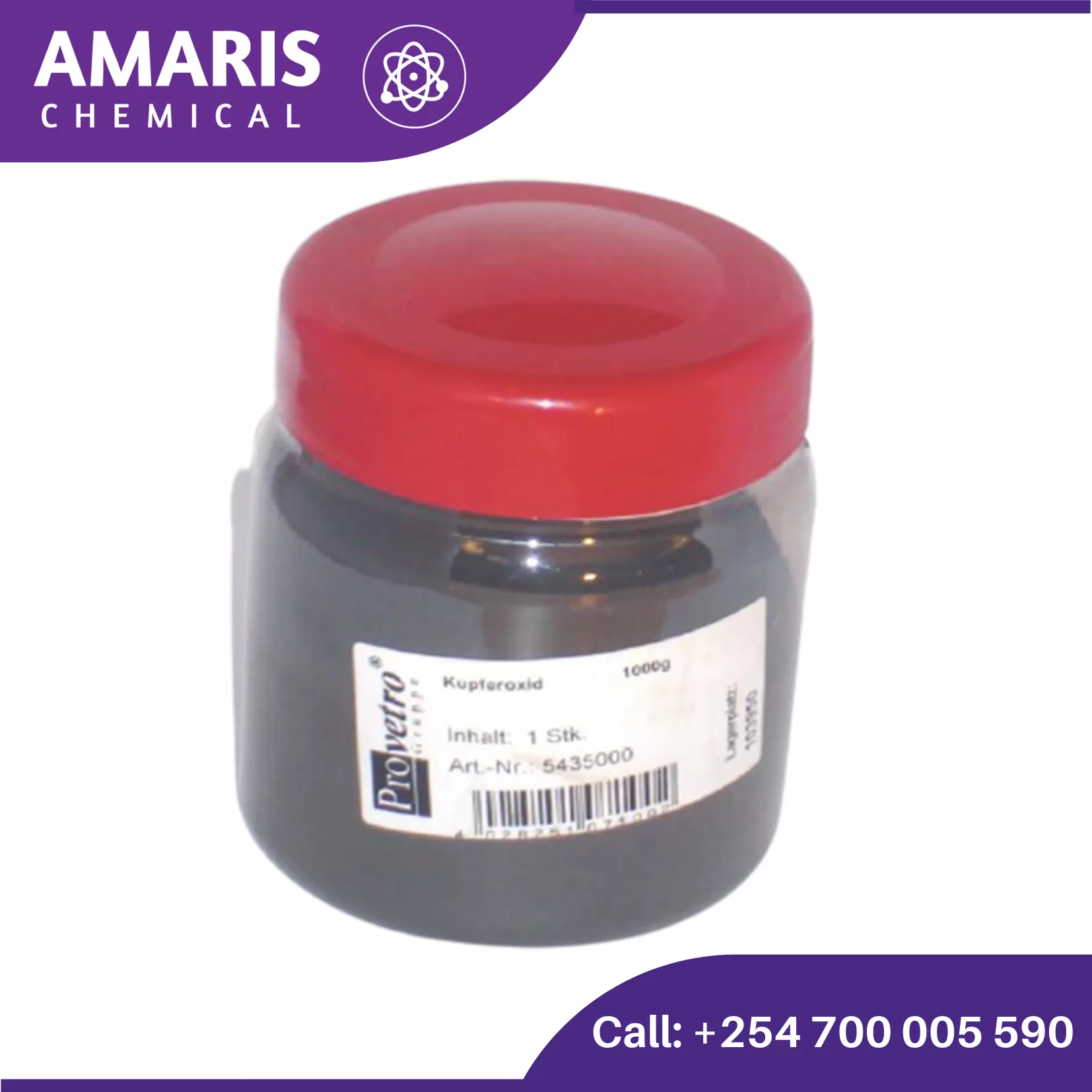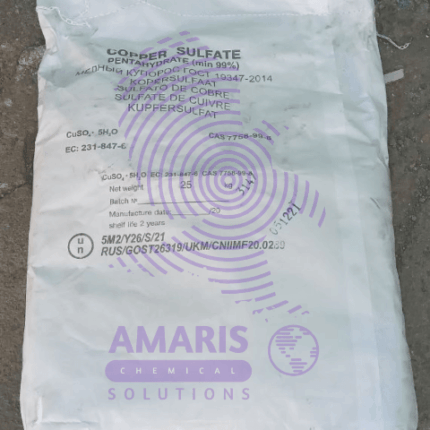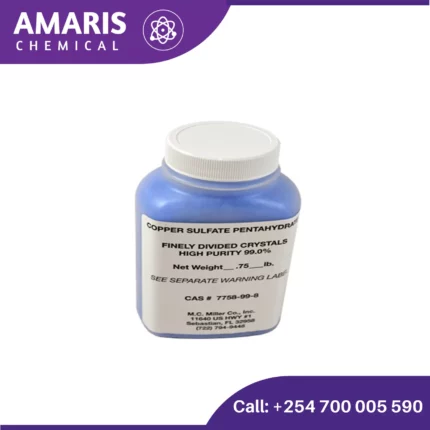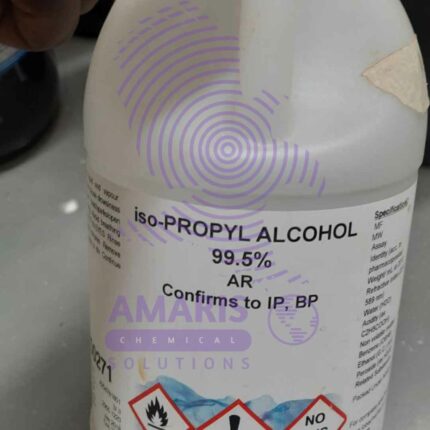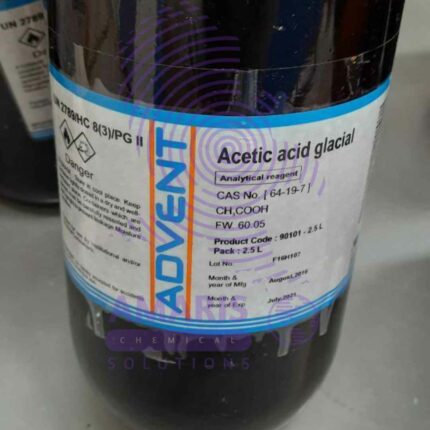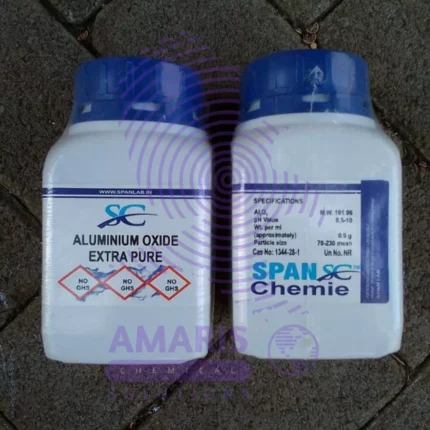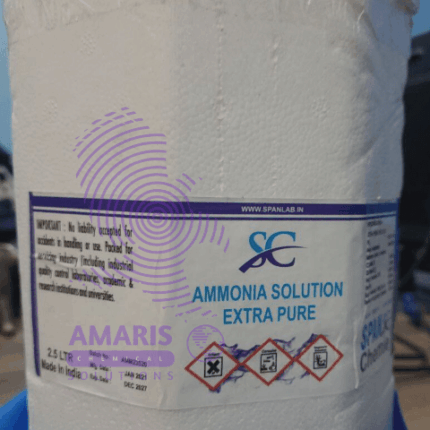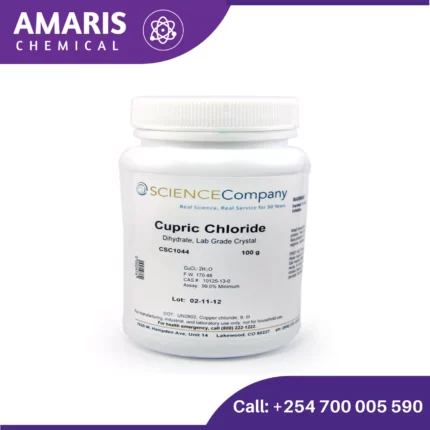
Cupric Chloride 250gm
$2,500.00 Original price was: $2,500.00.$2,300.00Current price is: $2,300.00.
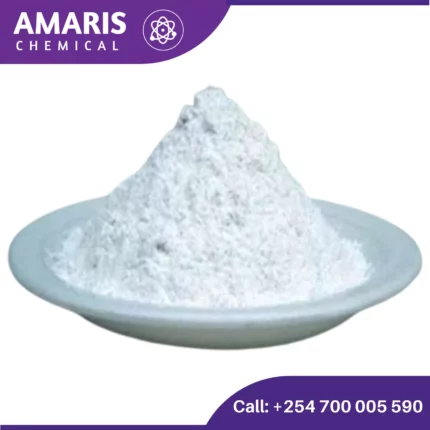
Cupric Sulphate Anhydrous
$2,500.00 Original price was: $2,500.00.$2,300.00Current price is: $2,300.00.
Cupric Oxide 100gm
$2,500.00 Original price was: $2,500.00.$2,300.00Current price is: $2,300.00.
Whatsapp Order
Cupric oxide, also known as copper(II) oxide, is a black solid with the chemical formula CuO. It is a significant compound of copper and has various applications in different fields. Here are some key points about cupric oxide:
Properties:
- Chemical Formula: CuO
- Appearance: Black or dark brown powder.
- Molecular Weight: 79.545 g/mol
- Melting Point: 1,326 °C (2,419 °F)
- Density: 6.315 g/cm³
- Solubility: Insoluble in water but soluble in acids.
Production:
Cupric oxide can be produced by several methods, including:
- Thermal Decomposition: Heating copper(II) nitrate, copper(II) carbonate, or copper(II) hydroxide in the absence of oxygen.
- Direct Oxidation: Heating metallic copper in the presence of oxygen.
SKU:
ACS45818CHEM0
Category: Analytical Reagents
Description
Table of Contents
ToggleUses of Cupric Oxide
1. Chemical Reactions and Experiments:
- Redox Reactions: Cupric oxide is often used in experiments to demonstrate redox reactions, where it acts as an oxidizing agent. For example, it can be reduced to copper metal by heating with hydrogen gas.
- Thermal Decomposition: Used to study thermal decomposition reactions. Cupric oxide can be obtained by heating copper carbonate or copper hydroxide.
2. Analytical Chemistry:
- Quantitative Analysis: Employed in gravimetric analysis to determine the concentration of copper in samples. Cupric oxide can be weighed before and after reactions to calculate the amount of copper present.
- Reagent in Tests: Acts as a reagent in various qualitative tests, such as detecting reducing sugars. Cupric oxide reacts with reducing sugars to form a red precipitate of copper(I) oxide (Cu2O).
3. Catalysis Studies:
- Catalyst Testing: Used as a catalyst in laboratory-scale reactions to study catalytic processes and reaction mechanisms. It can catalyze the oxidation of organic compounds and other reactions.
4. Synthesis of Compounds:
- Preparation of Other Copper Compounds: Cupric oxide is a precursor in the synthesis of other copper-containing compounds, such as copper sulfate (CuSO4) and copper acetate.
- Nanomaterials: Used in the synthesis of copper oxide nanoparticles, which have applications in electronics, sensors, and antimicrobial agents.
5. Material Science:
- Ceramics and Glass: Studied for its properties in ceramics and glass production. Cupric oxide is used to impart black and other colors to glass and ceramic materials.
- Superconductors: Investigated for its role in high-temperature superconductors, such as those based on cuprate materials.
6. Electronics and Semiconductor Research:
- Thin Films: Used in the fabrication of thin films for electronic devices. Cupric oxide thin films are studied for their electrical properties and potential use in solar cells and sensors.
- Photovoltaics: Research into its application in photovoltaic cells, where it can be used as an absorber material due to its semiconducting properties.
7. Educational Demonstrations:
- Demonstration of Chemical Principles: Frequently used in educational laboratories to demonstrate basic chemical principles, such as oxidation-reduction reactions, stoichiometry, and properties of metal oxides.
- Lab Safety and Handling: Teaching proper laboratory techniques and safety protocols when handling chemicals.
8. Environmental Chemistry:
- Pollution Control Studies: Used in experiments related to pollution control and environmental remediation. For example, it can be used to study the removal of sulfur dioxide from industrial emissions through chemical reactions.
You may also like…
Ammonium Cupric Chloride
Ammonium cupric chloride is a chemical compound composed of copper(II) (Cu²⁺), ammonium (NH₄⁺), and chloride (Cl⁻) ions. It appears as a greenish or yellowish crystalline solid, depending on its hydration state and structure.
Majorly, ammonium cupric chloride is used in research and specialized industrial applications. It serves as a catalyst in organic synthesis, where copper(II) facilitates oxidation or coupling reactions. In electroplating, it can act as a copper ion source for depositing thin metallic layers.
Copper sulfate 25kg
Copper sulfate, also known as cupric sulfate or copper (II) sulfate, is a chemical compound composed of copper, sulfur, and oxygen. Its chemical formula is CuSO4, and it appears as blue crystals or a white powder. Copper sulfate is commonly used as a fungicide, herbicide, and pesticide, as well as a laboratory reagent and a catalyst in chemical reactions. It is also used in the manufacture of copper compounds, in electroplating, and in the preparation of pigments for paints and dyes.
Cupric Carbonate 500gm
Cupric carbonate, also known as copper(II) carbonate, is a chemical compound with the formula CuCO3. It exists in nature as several different minerals, including malachite and azurite, which are valued for their vibrant green and blue colors, respectively. Cupric carbonate can also be synthesized in the laboratory.
In its natural form, cupric carbonate is often used as a pigment in paints and dyes due to its striking color. It has also been used historically as a source of copper in various applications, including as a fungicide in agriculture.
Cupric carbonate is insoluble in water, but it can react with acids to form soluble copper salts. Additionally, it can decompose upon heating to release carbon dioxide and form copper(II) oxide.
It's important to handle cupric carbonate with care, as copper compounds can be toxic if ingested or inhaled in large quantities.
Cupric Chloride 250gm
Cupric chloride, also known as copper(II) chloride, is a chemical compound with the formula CuCl₂. It appears as a yellowish-brown powder in its anhydrous form and turns into a blue-green crystalline solid when hydrated. This compound is highly soluble in water, forming a blue solution.
Properties:
- Chemical Formula: CuCl₂
- Molecular Weight: 134.45 g/mol
- Appearance: Yellowish-brown powder (anhydrous), blue-green crystals (hydrated)
- Solubility: Highly soluble in water and ethanol
Cupric Sulphate Anhydrous
Cupric sulfate anhydrous refers to the form of copper(II) sulfate that does not contain water molecules in its crystal structure. It is used similarly to the hydrated form (cupric sulfate pentahydrate) in laboratory settings, often in analytical chemistry and as a source of copper ions in various reactions and processes.
Cupric Sulphate Pentahydrate
Related products
2 Propanol 2.5 litres (IPA)
Isopropyl alcohol (IPA), also known as 2-propanol, is a colorless, flammable chemical compound with the molecular formula C3H8O. It is a type of alcohol that is commonly used as a solvent, disinfectant, and cleaning agent in a variety of industries, including healthcare, manufacturing, and electronics. IPA is often used as a disinfectant because it is effective at killing a wide range of microorganisms, including bacteria, viruses, and fungi. It is also commonly used as a solvent for oils, resins, and gums, and as a cleaning agent for electronic devices and other equipment.
Acetic Acid 2.5litre
Acetic acid is an organic acid with the chemical formula CH3COOH, also known as ethanoic acid. It is a colorless liquid with a pungent, sour taste and a distinctive vinegar-like odor. Acetic acid is an important industrial chemical used in the production of various products, including solvents, plastics, textiles, and food additives. It is also the main component of vinegar, which is commonly used as a condiment and preservative in cooking and food preparation.
Aluminum Oxide 500 grams
Aluminum oxide, often referred to as alumina, is a chemical compound made up of aluminum and oxygen atoms (Al2O3). It occurs naturally in various minerals, including corundum and bauxite. It is one of the most widely used compounds, valued for its hardness, strength, and resistance to abrasion and corrosion.
Ammonia Solution 2.5litres
An ammonia solution is a solution of ammonia (NH3) gas dissolved in water. It is a clear, colorless liquid with a pungent odor and a basic pH. The concentration of ammonia in the solution can vary, and is typically expressed in terms of percent by weight or by volume.
Ammonia solutions are commonly used in a variety of applications, including cleaning agents, fertilizers, and as a precursor to other chemicals. They are also used in industrial processes such as refrigeration, gas purification, and water treatment. Ammonia solutions can be dangerous if not handled properly, as they are highly corrosive and can release toxic fumes if mixed with certain chemicals
Ammonium Acetate 25kgs
Ammonium acetate is a chemical compound with the formula NH4CH3CO2. It is a white, crystalline solid with a vinegar-like odor. It is commonly used in various laboratory applications, such as in molecular biology and analytical chemistry. It can act as a source of acetate ion in reactions and is often used as a buffer solution in biochemical and molecular biology research. Additionally, it is sometimes used in the manufacture of other chemicals and as a food additive.


 Emollients
Emollients Humectants
Humectants UV Filters
UV Filters Surfactants (cosmetic)
Surfactants (cosmetic) Preservatives (cosmetic)
Preservatives (cosmetic) Fragrances and Essential Oils
Fragrances and Essential Oils Antioxidants (cosmetics)
Antioxidants (cosmetics)
 Solvents (lab)
Solvents (lab) Chromatography Chemicals
Chromatography Chemicals Microbiology and Cell Culture Reagents
Microbiology and Cell Culture Reagents Biochemical Reagents
Biochemical Reagents Inorganic and Organic Standards
Inorganic and Organic Standards Spectroscopy Reagents
Spectroscopy Reagents Molecular Biology Reagents
Molecular Biology Reagents
 Precious Metal Extraction Agents
Precious Metal Extraction Agents
 Plasticizers
Plasticizers Polymerization Initiators
Polymerization Initiators Stabilizers
Stabilizers Monomers
Monomers Fillers and Reinforcements
Fillers and Reinforcements Antioxidants (plastics)
Antioxidants (plastics) Colorants (plastic pigments,Dyes)
Colorants (plastic pigments,Dyes)
 Fertilizers
Fertilizers Plant Growth Regulators
Plant Growth Regulators Soil Conditioners
Soil Conditioners Animal Feed Additives
Animal Feed Additives Biostimulants
Biostimulants
 Dough Conditioners
Dough Conditioners Flour Treatments
Flour Treatments Fat Replacers
Fat Replacers Preservatives (baking)
Preservatives (baking)
 Surfactants (cleaning)
Surfactants (cleaning) Builders
Builders Bleaching Agents
Bleaching Agents Enzymes
Enzymes Solvents (cleaning)
Solvents (cleaning) Fragrances
Fragrances Disinfectant
Disinfectant Metal cleaning
Metal cleaning
 Binders/Resins
Binders/Resins Pigments
Pigments Solvents (paint)
Solvents (paint) Additives
Additives Driers
Driers Anti-Corrosion Agents
Anti-Corrosion Agents Specialty Coatings
Specialty Coatings Functional Coatings
Functional Coatings Application-Specific Coatings
Application-Specific Coatings
 Sealants and Adhesives
Sealants and Adhesives
 Biodegradable Surfactants
Biodegradable Surfactants Bio-based Solvents
Bio-based Solvents Renewable Polymers
Renewable Polymers Carbon Capture Chemicals
Carbon Capture Chemicals Wastewater Treatment Chemicals
Wastewater Treatment Chemicals
 Preservatives (food)
Preservatives (food) Flavor Enhancers
Flavor Enhancers Acidulants
Acidulants Sweeteners
Sweeteners Emulsifiers
Emulsifiers Antioxidants (food)
Antioxidants (food) Colorants (food)
Colorants (food) Nutrient Supplements
Nutrient Supplements Nutraceutical Ingredients
Nutraceutical Ingredients
 Fresh Herbs
Fresh Herbs Whole Spices
Whole Spices Ground Spices
Ground Spices Spice Blends
Spice Blends
 Surfactants(oil)
Surfactants(oil)
 Antibiotics
Antibiotics Active Pharmaceutical Ingredients
Active Pharmaceutical Ingredients Excipients
Excipients Vaccine Adjuvants
Vaccine Adjuvants Nutraceutical Ingredients
Nutraceutical Ingredients Solvents (pharmaceutical)
Solvents (pharmaceutical)
 Automotive chemicals
Automotive chemicals Pyrotechnic Chemicals
Pyrotechnic Chemicals


 Vulcanizing Agents
Vulcanizing Agents Accelerators & Retarders
Accelerators & Retarders Antidegradants
Antidegradants Reinforcing Agents
Reinforcing Agents Plasticizers & Softeners
Plasticizers & Softeners Fillers & Extenders
Fillers & Extenders Blowing Agents
Blowing Agents Adhesion Promoters
Adhesion Promoters
